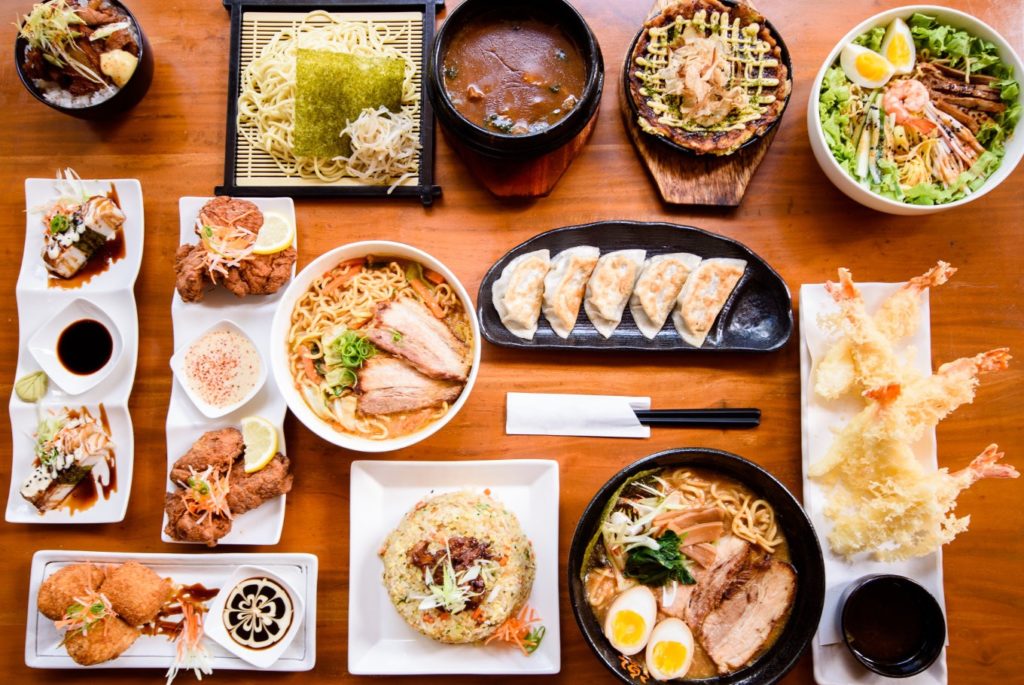
- Location: Japan is a long island chain between the Sea of Okhotsk, the Sea of Japanand the Philippine Sea. It is in the Pacific Ocean, East Asia and North East Asia. Japan is east of Siberia, the Korean Peninsula and Taiwan.
Japan’s varied geographical features divide it into six principal climatic zones:
- Hokkaido(北海道, Hokkaidō): Belonging to the humid continental climate, Hokkaido has long, cold winters and cool summers. Precipitation is not great, however winter brings monstrous snowfalls hundreds of inches in areas such as Sapporo and Asahikawa.
- Sea of Japan(日本海, Nihonkai): The northwest seasonal wind in winter gives heavy snowfall, which south of Tohoku mostly melts before the beginning of spring. In summer it is a little less rainy than the Pacific area but sometimes experiences extreme high temperatures due to the foehn wind
- Central Highland(中央高地, Chūō-kōchi): A typical inland climate gives large temperature variations between summers and winters and between days and nights. Precipitation is lower than on the coast due to rain shadow effects.
- Seto Inland Sea(瀬戸内海, Setonaikai): The mountains in the Chūgoku and Shikoku regions block the seasonal winds and bring mild climate and many fine days throughout the year.
- Pacific Ocean(太平洋, Taiheiyō): The climate varies greatly between the north and the south but generally winters are significantly milder and sunnier than those of the side that faces the Sea of Japan. Summers are hot due to the southeast seasonal wind. Precipitation is very heavy in the south, and heavy in the summer in the north. The climate of the Ogasawara Island chain in the Pacific Ocean ranges from a humid subtropical climate (Köppen climate classification Cfa) to tropical savanna climate (Köppen climate classification Aw) with temperatures being warm to hot all year round.
- Ryukyu Islands(南西諸島, Nansei-shotō): The climate of these islands ranges from humid subtropical climate (Köppen climate classification Cfa) in the north to tropical rainforest climate (Köppen climate classification Af) in the south with warm winters and hot summers. Precipitation is very high, and is especially affected by the rainy season and typhoons.
- Emphasis on well presented quality seasonal and fresh food.
- A standard meal is made by combining staple foods (rice of noodles) with soup and several okazu (meat, poultry, vegetables, fish or tofu dishes).
- Different cooking techniques are applied to each of the okazu.
- Japanese cuisine offers a great variety of dishes and regional specialties.
FAMOUS DISHES
- Tempura-battered and deep fried seafood and vegetables
- Yakitori grilled chicken -Yakitori, grilled chicken, is commonly a Japanese type of skewered chicken. The term “yakitori” can also refer to skewered food in general.
- Udon noodles -Udonis a type of thick wheat flour noodle of Japanese cuisine. Udonis often served hot as a noodle soup
- Soba noodles -is the Japanese name for buckwheat. It is synonymous with a type of thin noodle made from buckwheat flour, and in Japan can refer to any thin noodle.
- Ramen noodles -Ramen is a Japanese noodle soup dish. wheat noodles served in a meat-or fish-based broth, often flavored with soy sauce or miso, with sliced pork, dried seaweed, and Spring onions.
- Osechi: new year special dishes in three-tiered box
- Sashimi is thinly sliced raw meat—usually fish, such as salmon or tuna—that is served without rice.
- Sushi is not raw fish, but rather vinegared rice that is mixed with other ingredients, which may or may not include raw fish. In some countries, the terms “sashimi” and “sushi” may be used inter-changeably, but this is incorrect usage.
FOR MORE INFO GO TO THE LINK:https://en.wikipedia.org/wiki/Japanese_cuisine